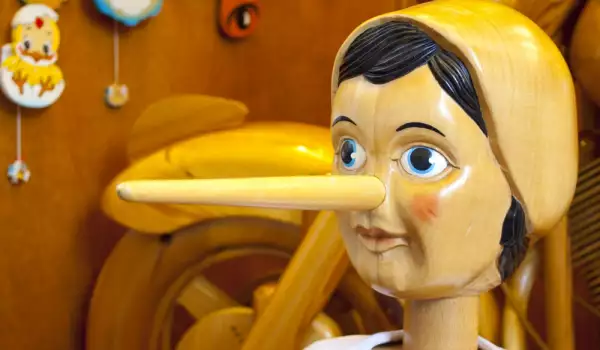We teach our children at a young age, just as we were taught, that they shouldn't lie - usually the explanation is that the truth, no matter what it is, is much better than the most ingenious lie.
At some point in life, everyone lies about something - and not just once. Others fall into the other extreme and can't stop lying. This is called mythomania - persons who suffer from this lie about everything, even obvious and clear things.
Perhaps we are at ease whenever we are forced to speak non-truths, not just because we believe that we're doing someone a favor, but also because our nose doesn't grow like that of the popular character from the children's story. If it became obvious every time we lied, like with Pinocchio, most of us would never even think about uttering a lie.
Little Pinocchio, however, wouldn't have been able to lie more than 13 times, reveals a new British study. Expert Stefan Lulin is positive that after that, his nose would become so long and heavy that his neck would break.

He works at the University of Leicester and began calculating the dimensions of Pinocchio's head, in order to carry out his study.
The scientist determined that if the doll is made of oak, it will weigh just over 8.8 lb (4 kg), while the nose will be 1″ (2.5 cm) long and weigh 0.2 oz (6 grams).
The calculations show that if Pinocchio's nose increases twice in length for each lie, then lie number 13 would cause such serious stress on Pinocchio's neck, that it would snap. Of course, things are much different in the story, since the small wooden doll speaks only 3 lies.
Lulin admits that the ability for Pinocchio's nose to grow is more than fascinating. This unique ability can cause him serious problems however - and that is exactly why continued lying is not recommended for Pinocchio, in the name of his health, adds the expert jokingly.
In the original story by writer Carlo Collodi, he actually lies only 3 times. The scientist's analysis is published in the Journal of Interdisciplinary Science Topics.















